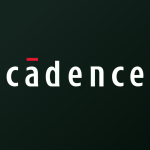Welcome to our dedicated page for Cadence Design System news (Ticker: CDNS), a resource for investors and traders seeking the latest updates and insights on Cadence Design System stock.
Cadence Design Systems Inc (CDNS) provides critical electronic design automation (EDA) software and semiconductor intellectual property solutions powering modern chip development. This news hub offers investors and industry professionals centralized access to official announcements and market-relevant updates.
Track earnings reports, product launches, and strategic partnerships shaping the EDA landscape. Our curated collection ensures timely access to developments impacting semiconductor design innovation across automotive, AI hardware, and IoT sectors.
Discover how Cadence's tools in digital verification, custom IP blocks, and system-level integration address evolving industry challenges. Bookmark this page for streamlined monitoring of operational milestones and technology advancements directly from the source.
Cadence Design Systems has launched Cadence OnCloud, the first SaaS and e-commerce platform tailored for a cloud-first approach in electronic design. Leveraging Amazon Web Services, it offers instant access to design tools via an online platform, catering to users with varied needs. Key features include credit card and ACH purchasing options, a comprehensive suite of design and analysis solutions, and the ability to scale resources according to project demands. This platform aims to enhance productivity and collaboration while minimizing on-premises infrastructure costs.
Cadence Design Systems has launched the Optimality Intelligent System Explorer, enhancing multi-disciplinary analysis and optimization for electronic systems. This new technology promises to deliver optimized designs up to 10X faster than traditional methods and offers even greater speed advantages on specific designs. It integrates AI capabilities similar to Cadence Cerebrus, providing industry-leading accuracy and efficiency. The software is currently available to select clients, with broader availability expected in Q4 2022.
Cadence Design Systems, Inc. (Nasdaq: CDNS) will participate in a virtual fireside chat at the Berenberg Thematic Software Conference in London on June 15, 2022. Executives John Wall, CFO, and Richard Gu, VP of Investor Relations, will speak at 9:00 a.m. BST. The session will be accessible via webcast, with a replay available on the Cadence website starting July 16, 2022, until July 1, 2022. Cadence is renowned for its Intelligent System Design strategy, focusing on software, hardware, and IP solutions for various markets, consistently recognized as one of the Best Companies to Work For by Fortune.
Cadence Design Systems, Inc. (NASDAQ: CDNS) will participate in a virtual fireside chat at the Nasdaq Investor Conference in London on June 14, 2022, at 2:30 p.m. BST. Senior VP and CFO
Cadence Design Systems (CDNS) announced that Emirates Team New Zealand, INEOS Britannia, and American Magic will utilize its computational fluid dynamics (CFD) solutions for the upcoming 37th America’s Cup in 2024. This collaboration aims to enhance the teams' yacht performance through advanced hydrodynamic modeling. Cadence's Fidelity Marine technology, essential for hull and hydrofoil design, has been pivotal since the 2013 Cup. The statement reflects Cadence's leadership in marine CFD solutions as all three teams strive for optimal designs in competitive sailing.
Cadence Design Systems (CDNS) announced the launch of 15 new Verification IP (VIP) solutions aimed at enhancing the verification process for advanced System on Chips (SoCs). These VIPs help engineers ensure compliance with latest specifications across various sectors, including industrial, automotive, hyperscale data centers, and mobile devices. The offerings support crucial protocols like LPDDR5x, USB4, and Arm AMBA 5 CHI. The new solutions are backed by Cadence TripleCheck technology and integrate into Cadence's verification flow, aimed at expediting the SoC design process.
Cadence Design Systems (NASDAQ: CDNS) will participate in a virtual fireside chat at the Bank of America Global Technology Conference on June 7, 2022. The discussion will feature John Wall, CFO, and Richard Gu, VP of Investor Relations, starting at 11:45 a.m. PDT. The event will be available for live streaming and will also be archived for replay on Cadence's investor relations website from 5:00 p.m. PDT on June 7 through July 1, 2022.
Cadence Design Systems has entered a multi-year partnership with the McLaren Formula 1 Team, becoming an Official Technology Partner. This partnership grants McLaren access to Cadence's Fidelity CFD Software, enhancing their aerodynamic design capabilities. The software's innovations promise to expedite design processes and improve reliability. The collaboration is set to debut during the Monaco Grand Prix with intentions to boost McLaren's on-track performance.
Cadence Design Systems (Nasdaq: CDNS) has achieved certification for its digital full flow on GlobalFoundries' (GF) 12LP/12LP+ process platforms. This certification ensures that Cadence's tools meet GF's accuracy and quality criteria, allowing customers to enhance designs for aerospace, AI, and consumer applications efficiently.
By utilizing Cadence's certified tools, users can accelerate their design cycles and confidently meet Power, Performance, and Area (PPA) targets. The certification also strengthens Cadence's Intelligent System Design strategy, promoting a faster path to design closure.
Cadence Design Systems (Nasdaq: CDNS) will host a virtual fireside chat with CFO John Wall and VP of Investor Relations Richard Gu at the Needham Technology and Media Conference on May 16, 2022. The presentation is scheduled for 12:45 p.m. EDT and will be available via webcast on the Cadence website. An archived replay will start at 5:00 p.m. PDT the same day, lasting until June 17, 2022. Cadence is recognized for its expertise in electronic systems design, serving leading companies across various dynamic market sectors.


